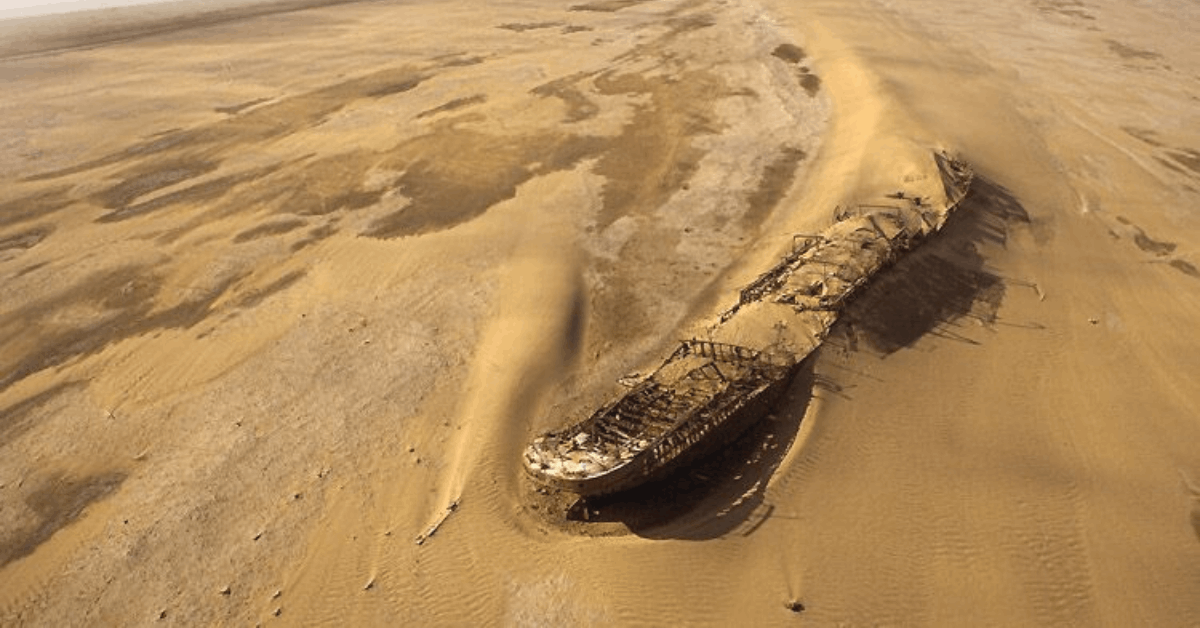Namibia is a country in Southwest Africa, and one of the most famous features of its territory is the Namib Desert, which is located along the Atlantic coast. The Skeleton Coast is the northernmost part of this coast, though this name is more generally used to indicate the coastal part of the Namib Desert up to the Orange River. The Skeleton Coast is known for being particularly inhospitable and difficult to access; inland, the desert stretches for tens of kilometers, and it is difficult to approach from the sea due to the strong waves caused by the Benguela Current.
For these reasons, the coast was called by the Bushmen “the land God created in anger,” while the current name refers to the large number of shipwrecks stranded along the coast.

For those who used to sail in these parts in the past, the trial was indeed harsh; the desert dunes here advance incessantly, whipped by the wind to the point of shaping the seabed itself, forming sandbanks that not even maps could accurately chart.
The dense fog that pours from the land almost every morning makes it difficult to understand one’s position, to the point that for many navigators, the passage from the ocean waves to the hot and hellish sand of the desert was truly sudden.

One wreck, in particular, seems to best represent this hell.
Trapped in a blanket of dense fog, the merchant ship “Eduard Bohlen” ran aground along the Skeleton Coast on September 5, 1909. The cargo ship, about 100 meters long and manned by a crew of 30, now lies partially buried under the sand, destined never to complete its journey to Cape Town. This was revealed by the Namibia tourism site.
Strangely, the ship appears to have sunk in the middle of the desert. In fact, in the years following its sinking, the desert began to eat away at the coast, and now the wreck is located more than 300 meters from the water. It has become a must-visit for wreck enthusiasts, history buffs, and desert explorers.

Now, gusts of sand carried by the wind have replaced the ocean water that once lapped at its rusted remains. The Skeleton Coast has become a kind of open-air ship cemetery, and many other wrecks dot the desert around the Eduard Bohlen. Some remain in the grip of the ocean, while others are nothing more than a few pieces of wood poking out of the sand, clearly visible even from satellite images and well-known earth mapping software.